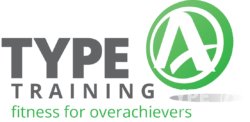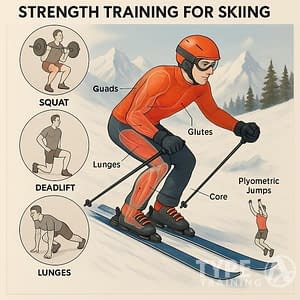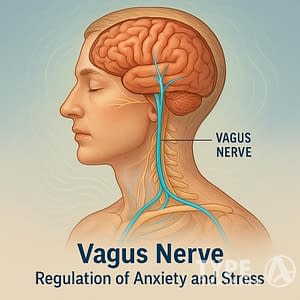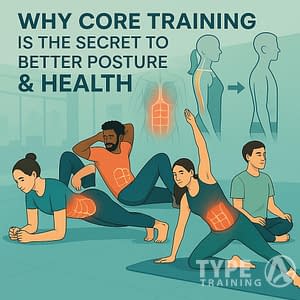When it comes to building strength, few exercises hit as hard as deadlifts. Trap bar deadlifts and conventional deadlifts both offer huge benefits, but they play different roles in your training.
If you’re stuck deciding between these two, knowing what sets them apart can really help you pick the right one for your goals.

Most lifters notice a big gap between their trap bar and conventional deadlift numbers, with a healthy ratio being about 2:1 in favor of the trap bar. This happens because the trap bar deadlift is generally easier to learn than the conventional deadlift.
Popular posts:
Beginners can usually pick up the trap bar deadlift right away, skipping weeks of technique drills. The hex bar puts you inside the weight, not behind it, which changes how your body moves during the lift.
This setup means your quads work harder during trap bar deadlifts, while conventional deadlifts hit your posterior chain—think hamstrings and lower back. Your choice really depends on your specific goals, your body, and any injuries or aches you might be dealing with.
Key Takeaways
- Trap bar deadlifts are easier to learn and usually let you lift heavier than conventional deadlifts.
- Conventional deadlifts target your posterior chain more, while trap bar deadlifts fire up your quads.
- Your goals, body mechanics, and injury history should help you decide which deadlift fits your program.
Trap Bar Deadlift vs Conventional Deadlift: Core Differences

These two popular deadlift variations differ in equipment, setup, and how your body moves during the lift. Those differences affect which muscles work hardest, your risk of injury, and how much you can lift.
Equipment Overview
Conventional deadlifts use a straight barbell loaded with plates on both ends. You’ll find this basic setup in almost every gym.
The trap bar (or hex bar) has a hex-shaped center you stand inside. It comes with two sets of handles—one at mid-shin height and another higher up. Most new trap bars have both built in.
Standing inside the trap bar lets you center yourself with the weight, not behind it. That single design tweak changes a lot about how the lift feels and works.
Setup and Hand Placement
For a conventional deadlift, you set your feet under the bar, toes slightly out. Your hands grip the bar just outside your legs, using an overhand, mixed, or hook grip.
The bar stays close to your shins as you pull. With a trap bar, you step inside the frame and grab the handles with a neutral grip—palms facing each other.
This grip feels more natural for a lot of people and is easier on your shoulders. The trap bar’s design also means you don’t have to work the bar around your knees, which makes it simpler for beginners or anyone with limited mobility.
Body Positioning and Mechanics
In a conventional deadlift, your hips start higher and your torso leans more forward. That puts the focus on your posterior chain, especially your hamstrings and erector spinae.
You need to keep your back rigid the whole time. The trap bar lets you keep your torso more upright and your hips lower, shifting some of the work to your quads but still hitting your posterior chain.
This upright position reduces stress on your lower back. The trap bar deadlift might look more like a squat, but it’s still mostly a hinge—not a true squat.
You can usually move the weight faster and with more power using the trap bar, which is great for athletes chasing explosive strength.
Muscles Worked and Activation
Both trap bar and conventional deadlifts hit a bunch of muscle groups, but the emphasis changes depending on the style. That’s worth knowing if you want to tailor your training.
Posterior Chain and Lower Back Emphasis
Conventional deadlifts work your posterior chain harder than trap bar deadlifts do. Your hamstrings and spinal erectors get about 15% more activation with the straight bar.
This happens because you hinge more at the hips and lean your torso forward. That forces your erector spinae to work overtime to keep your back flat.
Your lower back takes more stress during conventional deadlifts. If you’ve got back problems, that’s something to think about.
The trap bar deadlift puts 10-15% less pressure on your lower back, so it’s often safer for folks with back issues.
Quadriceps and Glute Engagement
The trap bar deadlift gets your quads working a lot harder than the conventional version. That’s because you’re more upright, almost blending a squat and a deadlift.
Your quads have to push more with the trap bar, making it an awesome move for building leg strength. If you want balanced lower body growth, that’s a big plus.
Glutes get plenty of work in both lifts, though the pattern changes. Conventional deadlifts make your glutes go through a bigger range of motion thanks to the deeper hip hinge.
Trap bar deadlifts still hit your glutes, but the quads help out more. This combo lets you usually lift 5-10% more weight with a trap bar since the mechanics are just a bit more favorable.
Upper Back and Core Muscles
Both styles work your upper back and core, but the focus shifts a bit. The traps, rhomboids, and lats all have to stabilize the weight regardless of the bar.
Conventional deadlifts might hit your upper back harder because you’re gripping a bar in front of you, which takes more effort to keep your shoulders in place and your back from rounding.
Your core fires up in both lifts to keep your spine steady and connect upper and lower body power. Trap bar deadlifts let you use a neutral grip, which can take some stress off your shoulders and upper back.
Lifting Technique and Proper Form
Good form matters for both trap bar and conventional deadlifts if you want results and want to avoid getting hurt. Your starting position and grip choice really affect how the lift goes and which muscles take the brunt of the work.
Hip Hinge Pattern and Bar Path
The hip hinge pattern changes between the two lifts. With conventional deadlifts, you push your hips way back and keep your shins pretty vertical. Your shoulders should be a touch in front of the bar as you start.
For the trap bar deadlift, you stay more upright. The weight sits right in line with your center of gravity, so the bar path is vertical. That makes the trap bar version a bit easier on your lower back.
For both, set up with:
- Feet hip-width apart
- Core braced
- Chest up
- Back flat (neutral spine)
Push through your heels and keep the bar close to your body the whole time. That’s key for safety and power.
Neutral vs Mixed Grip
Grip style makes a difference in how stable and strong your deadlift feels. For conventional deadlifts, you’ve got three main choices:
- Overhand grip: Both palms facing you. It’s simple but gets tough with heavy weights.
- Mixed grip: One palm toward you, one away. This helps keep the bar from rolling.
- Hook grip: Overhand, but thumbs tucked under your fingers. It’s secure but can be a bit rough on the thumbs.
The trap bar forces a neutral grip (palms facing each other). It’s easier on your biceps and just feels more comfortable for most people.
If you’re just starting out, try the trap bar neutral grip or an overhand grip on the straight bar. As you get stronger, you can try the mixed grip for the conventional deadlift to help with heavier weights.
Strength, Power, and Muscle Building Potential
Both deadlift variations help you build strength and muscle, but they go about it pretty differently. Each style targets certain muscles and power qualities in its own way.
Strength Development and Heavier Loads
The conventional deadlift usually lets you pull heavier weights than the trap bar. That’s because the setup puts your body in a strong, force-producing position that really taps into your posterior chain.
Conventional deadlifts build serious hip-hinge strength, which carries over well to powerlifting and other strength sports. Plus, since the bar sits in front of your body, your grip strength gets tested every rep.
The trap bar deadlift isn’t just a consolation prize, though. Its design keeps you more upright and centers the weight, so you can still load it up without trashing your lower back.
Some research even suggests trap bar deadlifts crank out more power output than conventional pulls. That’s a big deal if you’re chasing explosiveness.
Beginners or folks with mobility issues often progress faster on the trap bar. The learning curve just isn’t as steep.
Muscle Mass and Growth
Both moves pack on muscle, but they don’t hit the same spots. Conventional deadlifts hammer your posterior chain—think hamstrings, glutes, lower back, and lats.
If you want a thick back and powerful hips, conventional is tough to beat. On the other hand, trap bar deadlifts feel more like a squat-deadlift hybrid, so your quads get in on the action too.
For balanced leg development, the trap bar might edge out conventional since it spreads the work around. You can often handle more volume and recover quicker, too.
Honestly, your goals should steer your choice. If you want a monster posterior chain, conventional’s your friend. If you’re after well-rounded lower body growth with less fuss, the trap bar’s a solid pick.
Risks, Posture, and Injury Considerations
Choosing between trap bar and conventional deadlifts isn’t just about muscles and numbers. You’ve got to consider safety and long-term training success too.
Each lift loads your body differently, so the stress on your muscles and joints isn’t quite the same.
Lower Back Stress and Joint Impact
Conventional deadlifts put a lot of demand on your lower back. Since your torso leans forward, your lumbar spine has to fight against some pretty serious shear forces just to keep the bar moving past your knees.
The trap bar deadlift lets you stand taller, which spreads tension more evenly across your body. It’s less technically demanding, too.
Here’s how the joint stress breaks down:
- Conventional deadlift: More stress on your spinal erectors and hips
- Trap bar deadlift: Knees and hips share the load more evenly
- Weight distribution: Trap bar keeps the weight centered, while conventional puts it out front
If you’ve got a cranky back, the trap bar usually feels a whole lot friendlier.
Risk of Injury and Posture
The trap bar deadlift is safer for most beginners thanks to its design. Neutral handles and centered weight make it easier to keep good form and avoid silly injuries.
Here’s what changes about your posture:
- Trap bar: You stay more upright, like a squat-hinge mashup
- Conventional: Your torso leans forward, pure hip hinge style
Conventional deadlifts demand stricter technique. If you round your back, you’re asking for trouble. But if you nail the form, you’ll build a bulletproof posterior chain.
Beginners usually pick up the trap bar faster. Its shape naturally puts you in a safe starting position, so it’s a great way to master the hip hinge before moving on to trickier lifts.
Athletic Performance and Sports Applications
For athletes, the trap bar deadlift has some unique perks. Studies say it cranks out more power and takes it easier on your lower back, which is a win for anyone playing explosive sports.
Vertical Jump and Power Output
The trap bar deadlift can produce higher power outputs than conventional deadlifts. That’s gold if you need explosive power for your sport.
Since you’re more upright, the movement pattern looks a lot like jumping or sprinting. This means:
- More vertical force
- Faster force development
- Better transfer to sports like basketball or football
When researchers put both styles head to head, athletes usually moved the trap bar faster and with more power. Makes sense, right?
Sports-Specific Benefits
The trap bar deadlift works your quads a bit more but doesn’t ignore your posterior chain. That quad-dominant pattern shows up in a lot of athletic moves.
If you play team sports, the trap bar offers a few nice perks:
- Lower injury risk: Upright torso means less stress on your spine
- Quick to learn: Most athletes pick up the form faster than with conventionals
- Full-body gains: You still build traps, back, grip, and core
Even powerlifters sometimes use trap bar deadlifts as accessories. They’re a smart main lift during the season when you want to train hard but keep your back happy.
Variations and Programming Options
You can work both trap bar and conventional deadlifts into your routine in tons of ways. Mixing in other deadlift styles keeps things interesting and well-rounded.
Deadlift Variations (Sumo, Romanian, and More)
The sumo deadlift puts your feet wide and toes out. That shortens the range of motion, targets your quads and adductors, and goes easier on your back. Handy if conventional form gives you trouble.
The Romanian deadlift (RDL) starts from standing. You hinge at the hips with a slight knee bend, really lighting up your hamstrings and glutes. RDLs make great accessories for both trap bar and straight bar work.
Other deadlift tweaks worth trying:
- Deficit deadlifts: Stand on a platform to stretch the range
- Pause deadlifts: Hold at knee level for 2-3 seconds
- Rack pulls: Start higher to focus on the lockout
Integrating Into Training Programs
How often you deadlift matters. Most folks do best with 1-2 sessions per week, leaving 48-72 hours to recover.
Here’s a simple way to set it up:
- Heavy day: Main lift (trap bar or conventional) at 80-90% of your max, 3-5 sets of 3-5 reps
- Volume day: A secondary lift at 65-75%, 3-4 sets of 6-8 reps
Think about where deadlifts fit in your split. They work on back days or lower body days, but they’re taxing. Maybe pair them with lighter accessories instead of heavy squats.
For progress, mix up your intensity and volume every 4-6 weeks. Nudge the weight up gradually, but keep your form sharp. Track your lifts so you actually know you’re getting stronger.
Grip Strength and Supportive Equipment
Trap bar and conventional deadlifts both challenge your grip, but not in quite the same way. The gear you use can change the whole experience, too.
Enhancing Grip Strength
The conventional deadlift usually tests your grip more than the trap bar. With a straight bar, your hands have to fight the urge for the bar to roll—that’s real grip training.
The trap bar’s neutral grip (palms facing each other) feels more natural and lets you hold heavier weights, especially if you’re new to deadlifting.
Want a stronger grip? Try this:
- Use chalk for better hold
- Try a mixed grip (one over, one under) on conventional lifts
- Practice double overhand at lighter weights
- Mix in grip-specific moves like farmer’s walks
Honestly, grip fatigue often ends your set before your muscles do. Training without straps sometimes is the way to build real, stubborn grip strength.
Plates and Lifting Accessories
The equipment you pick really shapes your deadlifting experience and progress. Bumper plates are great because they always have the same diameter, no matter the weight, so keeping good form feels a bit more natural.
Here are some key accessories that help with deadlifting:
- Lifting belts: Offer core support for both trap bar and conventional deadlifts.
- Lifting straps: Step in when grip strength holds you back.
- Lifting
shoes : Go for flat, minimal cushioning for the best stability. - Knee sleeves: Add a bit of warmth and slight support to your joints.
If you prefer conventional deadlifts, you might want a thinner belt so your hips can move freely. With trap bar deadlifts, you’ve got more leeway—its neutral stance just works better with a range of gear.
The trap bar’s quality matters too. I’d suggest finding one with both high and low handles, so you can tweak the challenge to match your needs and how mobile you’re feeling that day.
Choosing the Right Deadlift for You
Picking between trap bar and conventional deadlifts really comes down to your experience, physical quirks, and what you want out of training. Both can boost your strength, but each has its sweet spot.
For Beginners
The trap bar deadlift is usually safer and easier to learn if you’re new to lifting. It puts you in a more upright spot, which takes some pressure off your lower back.
When you’re just starting, the trap bar’s design almost guides you into good form. Since the handles are at your sides, it’s just easier to keep your back neutral without overthinking it.
You might find you can move heavier weights sooner with the trap bar, which feels good and builds confidence. This style also generates more speed and power, so it’s a solid pick for athletes.
Here’s what stands out for beginners:
- Lower injury risk thanks to more natural body positioning.
- Faster strength gains early on.
- Better quad engagement for a well-rounded lower body.
Mobility Limitations and Individual Needs
Your body shape and mobility really influence which deadlift feels right. The trap bar deadlift works for a lot of body types and lets you move more naturally.
If your hips are tight or you’ve got long limbs, the conventional deadlift can feel awkward. The trap bar sits somewhere between a squat and a deadlift, so you don’t need as much hip mobility, but your posterior chain still gets plenty of work.
If you’ve got a history of back issues, the upright stance of the trap bar deadlift puts less strain on your spine. That’s a big deal if you’re trying to train smart after an injury.
The trap bar also emphasizes quad strength more than the conventional version. So if building your quads is high on your list, the trap bar’s probably the way to go.
Summary
Both the trap bar deadlift and the conventional deadlift build serious strength. Still, they’re not quite the same—and it’s worth knowing how they differ.
The trap bar deadlift puts about 10-15% less stress on your lower back. That’s a big deal if you’ve ever worried about tweaking your back.
Most folks can lift 5-10% more weight with the trap bar. The weight stays centered, and your body stays more upright—honestly, it just feels a bit more natural for some people.
Muscle activation shifts depending on which one you pick. The trap bar deadlift fires up your quads about 25% more.
The conventional deadlift, on the other hand, really targets your posterior chain—think hamstrings, glutes, and lower back.
Some coaches suggest a trap bar to conventional deadlift ratio of about 2:1 for most people. Of course, everyone’s a little different.
So, when should you reach for the trap bar?
- You’re new to deadlifting
- Your back needs a break
- You want bigger quads
- You just want something a bit more forgiving
And what about the conventional deadlift?
- You compete in powerlifting
- You’re chasing posterior chain gains
- You just like the classic barbell feel















